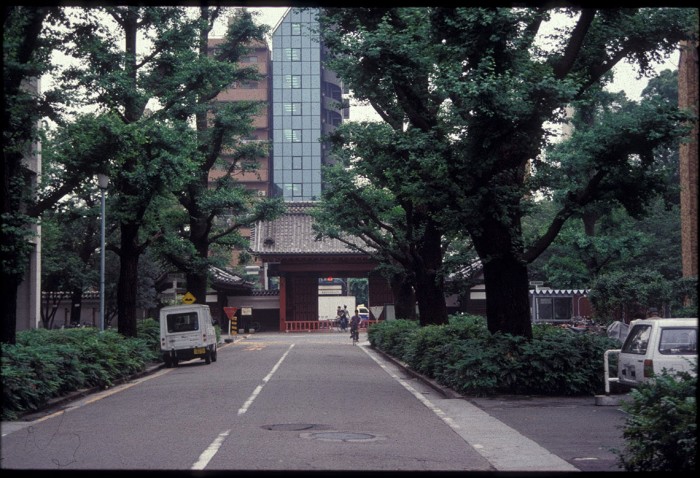
Baseball is an imported sport, but it records the highest level of popularity, earning the game the title of national sport along with sumo. Baseball is played at all competitive levels with great enthusiasm among players and spectators.
Baseball came to Japan first in 1873, just five years after the Tokugawa shogunate was overthrown. At the end of the century, baseball and nationalism were mixed together in a series of baseball games between a pre-university school, First Higher School in Tokyo, and American residents of Yokohama, including some former professional and semi-professional players from naval ships. After the first game, the series swung in favor of the Japanese school boys, to the great glee of the popular press. Thereafter, the popularity of baseball was assured. Schools throughout the country took up the sport while at the university level, Keio and Waseda began a competition in 1903 which today is watched by millions, in the newspapers if not on television. The competition later expanded into a league made up of the major universities in Tokyo, including the University of Tokyo, and is now the top competition at the university level.
High school competition was organized at the national level in 1915 when a nation-wide high school elimination tournament was staged in August. In 1924, the competition expanded to a second tournament which takes place in the spring months of March and April. Today, the preliminary, regional games are televised in part and the main tournaments take place at the stadium of a professional team with full television coverage. Each losing team scrapes up bags of sand to immortalize their achievement, amidst tears and teenage angst. The entire nation seems to sympathize with each losing school and glory with the eventual winner.
Professional baseball in Japan began in 1934 with players selected from non-professional teams to face a visiting all-star team from America. By 1936, there were seven professional teams, growing into the two-league system made up of fourteen teams today. Games are televised almost nightly throughout the season and stadiums of the more popular teams are standing room only. Contacts with North American baseball continue with foreign players frequently being hired (although there is a quota on foreign players on each team), a Major League team touring Japan from time to time, and spring training for some Japanese teams in America, often in conjunction with an American club.
Connoisseurs of the sport find vast differences between the sport as it is played in North America and in Japan. The American game is said to be a great deal more individualistic while the Japanese game emphasizes teamwork, self-sacrifice and exhausting effort to a higher degree. While records are not always comparable (often because Japanese ballparks are smaller), the world record for homeruns is held by a Japanese player, Oh (or O) Sadaharu. Spectators have developed slightly different traditions too: for example, Japanese fans always return foul balls to the playing field instead of carrying them home and they participate in carefully orchestrated cheering. In both places, however, summertime sees players of all ages outside with bat and glove looking for the same thing — a perfect game.
While baseball and sumo are undeniably the national spectator sports, many other sports have important followings, and serve important functions, in the country.
Golf is a game that is all over the landscape and frequently on television. Few cities are far from a golf course because golf has been a businessman’s game throughout the post-1945 period. Golf give executives an opportunity to discuss business in an informal setting while they gauge each others’ character in reaction to the difficulties of the game. Their subordinates usually cannot afford the high green fees of the game, but they too practice as much as they can. Driving ranges, some of them with multi-story tiers of players and all of them with huge nets slung from steel girders, dot the urban landscape. Even tops of office buildings and backyards have miniature driving ranges, some of them no more than 5 feet wide and 10 feet long. There is a very lucrative professional golfers’ tour in Japan with links to other tours in Asia and the world. Hardly a weekend passes without a few hours of a tournament or a some tips from a pro broadcast on the small screen.
The 1964 Tokyo Summer Olympics saw volleyball on the list of sports for the first time. Much to the delight of the home audience, Japan won the gold medal and instantly, volleyball became a favorite sport. Like basketball and, for many years, soccer, volleyball was a company sport. That is, the players were not professional, but they were recruited to play the sport by their companies. Volleyball continues to be popular and company workers on break can frequently be seen in the car park passing a ball around a circle.
Soccer was raised to the professional level in 1993 with the launching of the J-League. The game has long been popular at the school and company level and again many a game is televised. As with baseball, foreign stars have been hired to provide additional excitement in the J-League. Skiing is a very popular winter sport and has, like volleyball, been greatly popularized by television and the winter Olympics.

American football, rugby, hiking, camping, and fishing have achieved varying degrees of popularity. Hiking and fishing have been popular since the Edo period, but all of them, plus baseball, volleyball and soccer, have also be subjected to the scrutiny of cartoonists who produce volumes of cartoon sports ‘novels’ and animated cartoons. Tennis has been very popular since the late 1950s when the courts at Karuizawa became known as the venue for the courtship of the then Crown Prince and his fiancee (the present Emperor and Empress). Television and the world-wide popularity of tennis in succeeding decades has ensured that every sports club and every suburban city government puts in as many courts as possible to meet demand.

